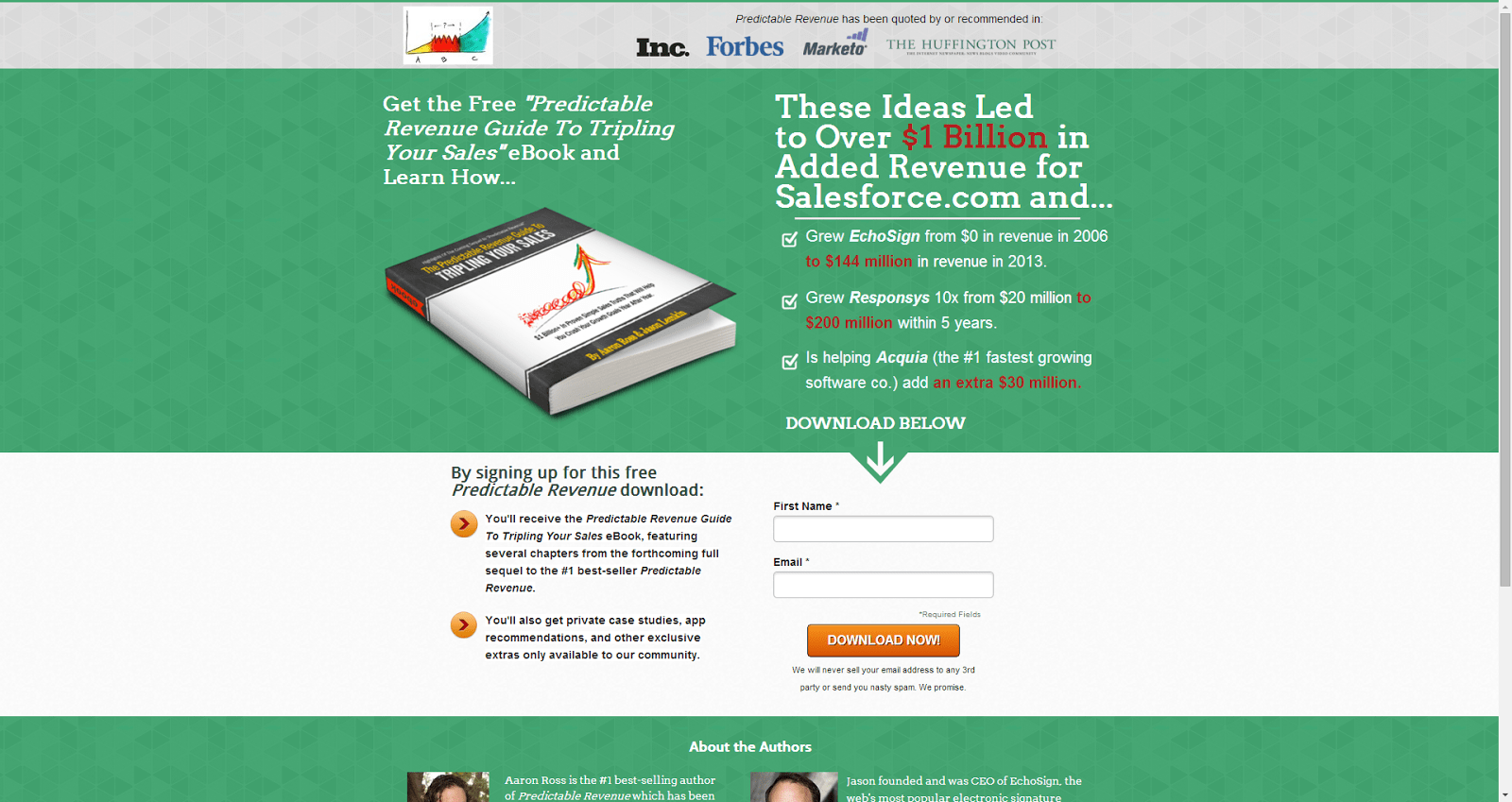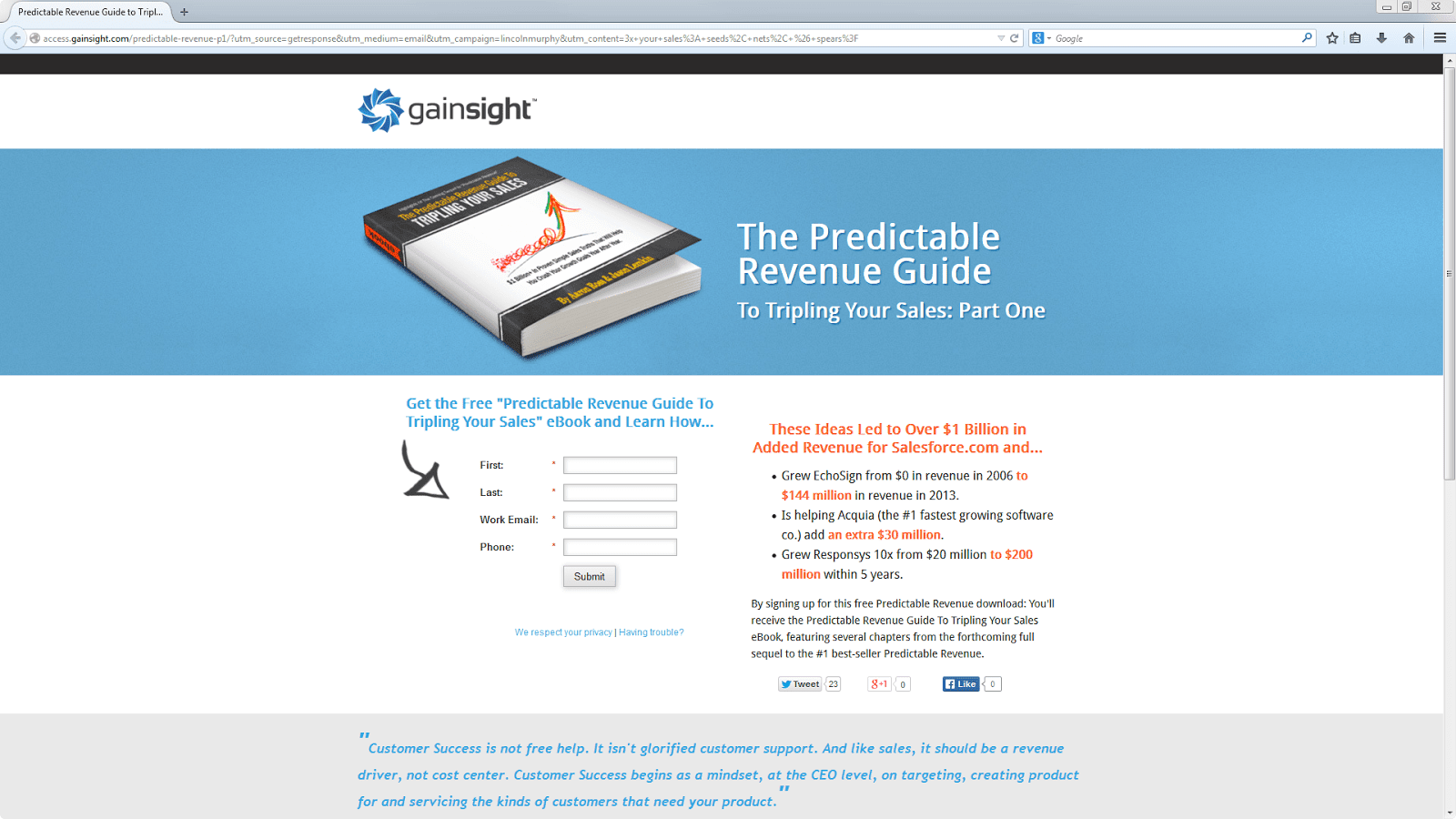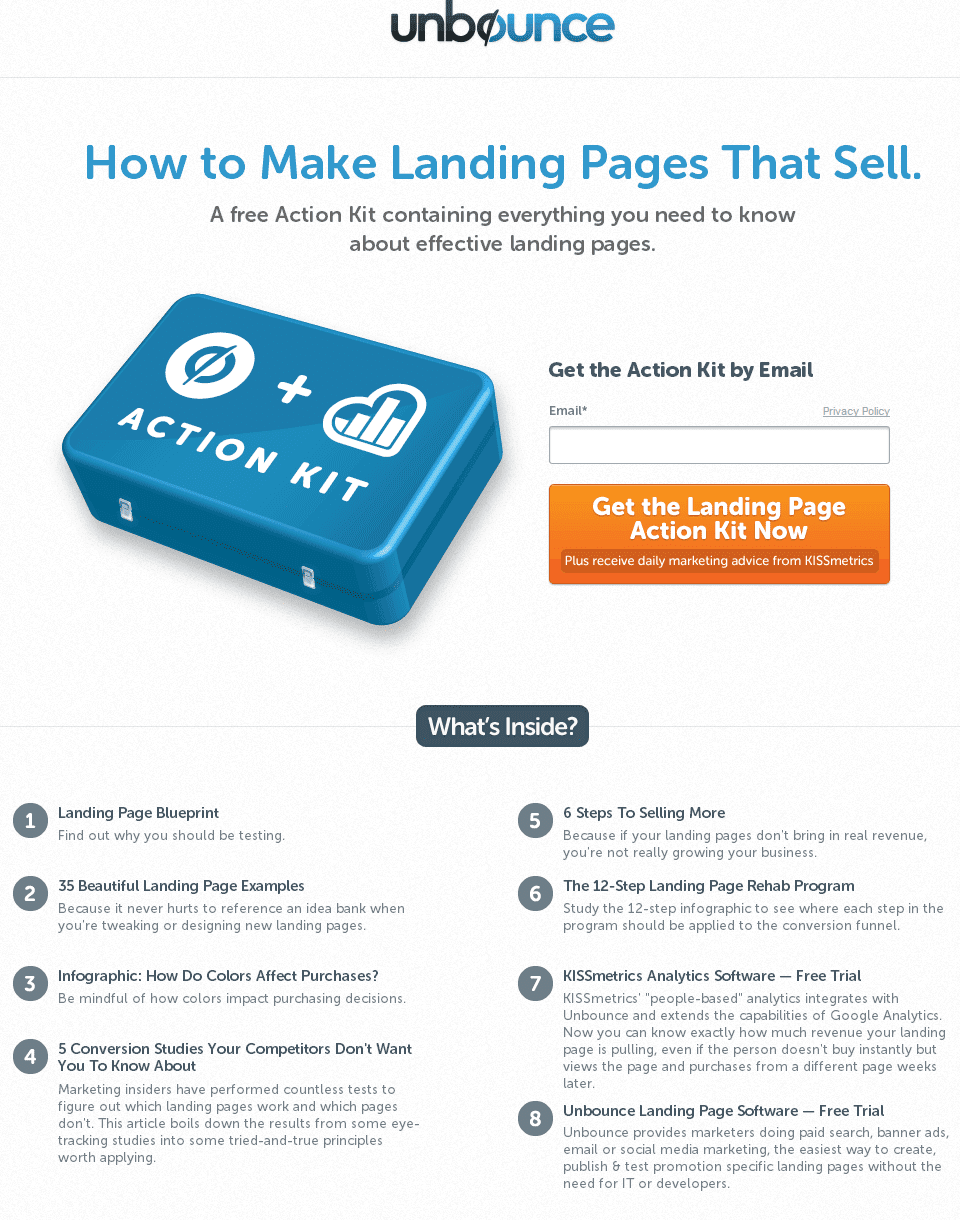Effective content promotion depends not only on online PR and advertising but also on searching your ecosystem for brands with familiar audiences. Those are the brands with which you could form a mutually beneficial relationship.
We've seen some very effective examples of this recently. For example, Jason Lemkin former CEO of EchoSign, and Aaron Ross, former sales director at Salesforce.com, recently put together “The Predictable Revenue Guide to Growing Your Sales”, a long-form guide on growing your SaaS company.

Their promotion plan involved sharing it with influencers. But most interestingly, they gave relevant sections of their book to other vendors to offer to their audiences. For example, Gainsight, a SaaS customer success software vendor, offered the book to their audience behind their own lead form:

Another example of joint content is this bundle from KISSMetrics and Unbounce:

Both companies share a similar audience—mid-market to enterprise digital marketers—and they repackaged some of their best content into a kit to promote mutually to their large audiences.
So how can you make these partnership-driven promotion efforts work for your company?
The following three tips are key when working with partners as part of your content promotion plan.
As I’ve written about previously (on this site and elsewhere), the biggest mistake people make in top-of-funnel content marketing is creating content and promoting it as separate processes, rather than viewing the project as an integrated, end-to-end process of planning, creation, and promotion.
Before you start creating your content piece, make a list of the companies you’d like to get involved and figure out how you can work together.
Begin this process by asking: “Who has the audience I want to reach but doesn’t compete with me?”
People often reach out to partners where there’s no fit—either their offerings are directly competitive (or perceived to be competitive), or there’s simply no audience overlap at all.
A good way to approach this is to map your business ecosystem, starting with the question: “Who else do my customers trust?”
For example, if you operate an eCommerce store selling chess sets, you won’t be able to partner with other chess stores or more general stores.
But you can probably work with:
and the list goes on.
Once you have a list of partners, don’t simply ask them if they’ll share or mail your content.
At this risk of cliché, ask yourself not what your partner can do for you, but what you can do for your partner.
How does working with you help your partner? Does it drive new customer acquisition, branding, lead generation, or something else entirely?
Before you approach a potential partner, understand that your she will have to tell her boss why they should share their audience with you—and for the partnership to succeed you’ll need to have a very good answer ready.
Partners are an important part of a successful content promotion strategy—and they can make the difference between campaign success and failure. Start early and keep your partners’ success in mind, and you could find yourself with a successful campaign on your hands.